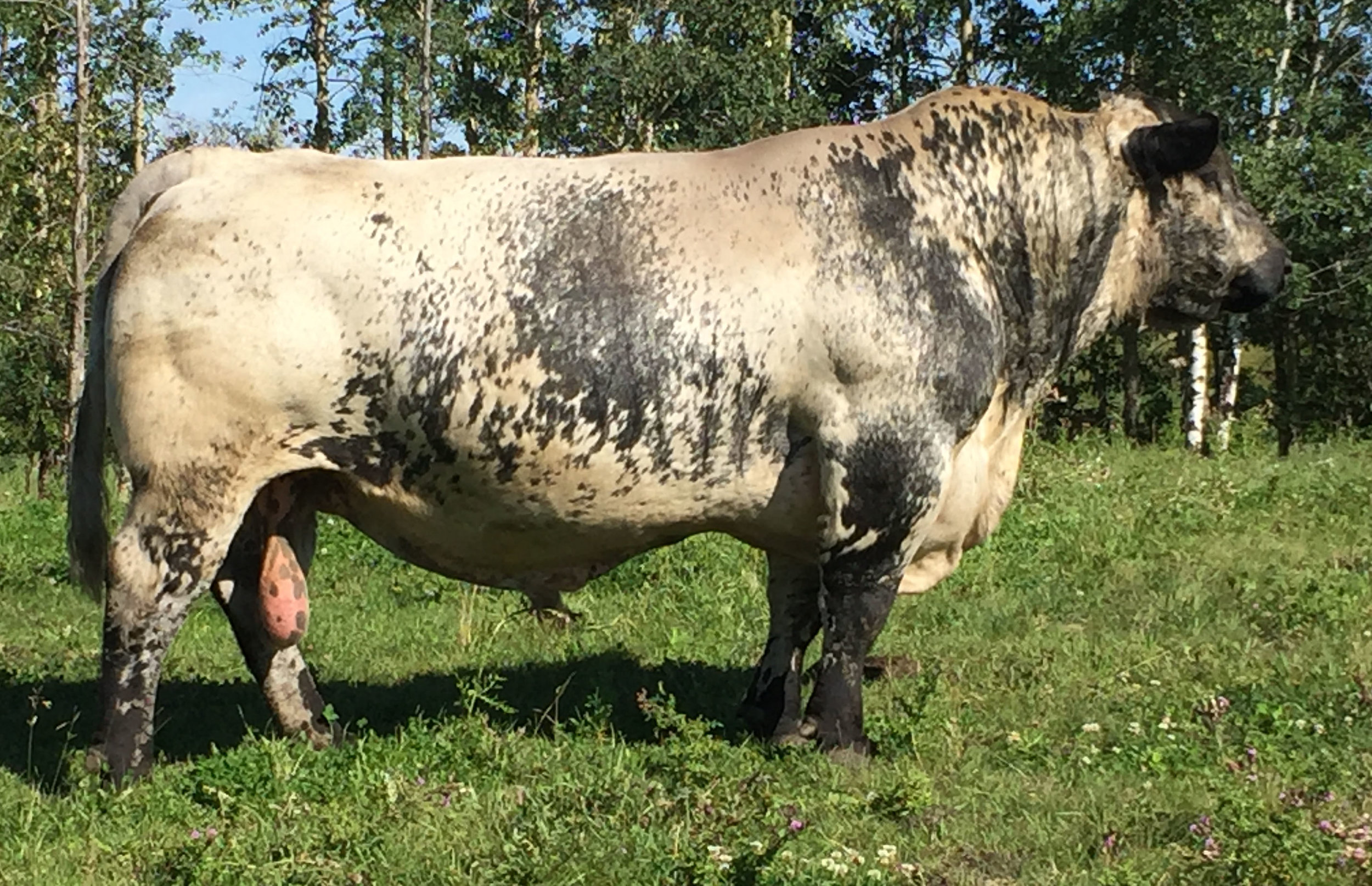
—
Speckle Park reference sires 2019
MAUNGAHINA KIDMANS COVE
Cove has been a very high used bull across both the beef and dairy industry in NZ and Australia. Taking the carcase and marbling traits from his sire Falcon (highest IMF bull of any breed in NZ in his year). Two yearling heifers made a record price of $27,000 and 25,000 in 2018 sale. Just recently at the Scone bull sale in Australia made $575.00 a straw.
MAUNGAHINA LEGACY
Maungahina Legacy is our main sire along with Cove. He has been our hidden secret. I believe Legacy is the best bull we have bred in 12 years of breeding Speckle Park.
He is in the Top 1% for 200, 400, 600, Retail Beef Yield and Milk! And also Top 3% For EMA.
Currently holds the world record $5,150 per straw sold at Maungahina Bull Sale June 2020. Embryos sold to a world record of $6,400 Maungahina Bull Sale June 2021.
UPTO SPECS ULYSSES 25U
NZ semen rights imported by Maungahina / Premier studs in 2017. We viewed him at Alta genetics last November. At 9 years of age he was selected for longevity, soundness and confirmation. Semen sold at Summit 3 sale in 2017 for $500 a straw.
SPKNZ EXTREME E27
Described by many who saw him as one of the best beef bulls of any breed. His dam is without doubt one of the breeds greats in Codiak Nice Lady 25N. The growth and performance of his progeny have proven him to be one of the performance sires of the breed. His mature age daughters are fast becoming some of the most reliable brood cows in their respective herds.
Semen sold in the Maungahina Bull Sale June 2020 for $3,200 per straw.
MAUNGAHINA MAXIMUS
Maximus has been our main sire in the last two years, collecting over 50,000 straws for the dairy/beef industries. He is a proven low birthweight, short gestation sire and was highest marbling (IMF) bull in his year group. Two of his sons for 2022 will be retained for stud use at Maungahina. A bull that is breeding true to type. A limited amount of semen is available at Agri-Gene Australia.
MAINSTREAM ELDORADO E11
The photo tells the story. Breeding true to type, with constitution, muscle and thickness. He had an IMF of 6.5. We have sold 3500 straws of semen in the beef and dairy industries in New Zealand. He colour marks most progeny. At six years of age looks no different to the photo and is sound as a bell.
SPKNZ FALCON
At 18 months of age Falcon’s ultrasound scanned the top out of any breed in New Zealand with an amazing 7.2 IMF. He is incredibly quiet, low birth weight and well muscled with great structure. We have used him extensively in the stud.
Speckle Park History
_
First Canadian Visit
In 2007 Mark made a trip to the Canadian Agribition where Speckle Park cattle caught his eye. He spent hours looking at the general makeup and structure of the breed. Mark found them to be well structured, moderate framed and soft, easy keeping cattle. The further he looked into the breed it became clear that they are easily one of the most exciting breeds for an ever changing environment. They are able to adapt to extreme in temperatures -35 below to +35 degrees, yet achieve the ideal carcass qualities for what the beef industry is striving for, high marbling with low fat cover.
_
Speckle Park New Zealand
In 2006 Bruce McKenzie and Raymond Matthews first viewed the Speckle Park cattle at the Canadian Agribition. In 2007 Mark looked over them and was impressed by the cattle. In 2008 Maungahina and Waiorongomai formed a Partnership, Speckle Park NZ, with 130 imported embryos and semen from Canada. 70 pure bred calves over the two years resulted in the best genetics selected in Canada. After an extensive breeding programme flushing our own cows and using our own embryos, semen and bulls we established a tremendous herd of Speckle Park cattle. In 2013 we reached the herd numbers required to split the stock between Maungahina and Waiorongomai as planned. Now in 2014 Maungahina Speckles will continue to breed and use the best genetics available from Canada and Australia to grow the exciting cattle that I know once you try, you will continue to use as they are that good.
_
Canadian Breed History
In 1959, when Eileen and Bill Lamont of Maidstone, Saskatchewan, Canada, brought their first speckled heifer from Mary Lindsay of Greenstreet, Saskatchewan, they didn’t realise the ‘wheels they had set in motion’. The Lamonts were breeders of Appaloosa horses and Angus cattle and thought the cattle would go well with their herds. Mary Lindsay had spotted a red roan heifer in her father’s herd a few years before and because she was interested in unusual colours she bought the heifer. Regardless of the herd sire she bred the cow to it always produced calves with that colour pattern. It is believed that the heifer was a descendent of a Teeswater Shorthorn and a bull which had the White Park colour pattern. The Lamonts crossed their speckled cows with the black Angus bulls. The resulting offspring came in a variety of colour patterns, some white with black points, some leopard coloured and some black sided with speckled hips, white top and underline and roan faces.
The Lamonts grew very interested and decided to attempt to develop a new breed. Interest in the cattle grew, not only with cattlemen but also the press. A trio of Speckle Park steers made the trip to the Royal Winter Fair in Toronto in 1972. They were featured in Case International Publications under a section on “Minority Breeds in Canada”. Around 1983 Lloyd Pickard, a cattle promoter and Angus breeder, included a few pages about the Speckle Park in his book “100 Years of Angus in Canada”.







